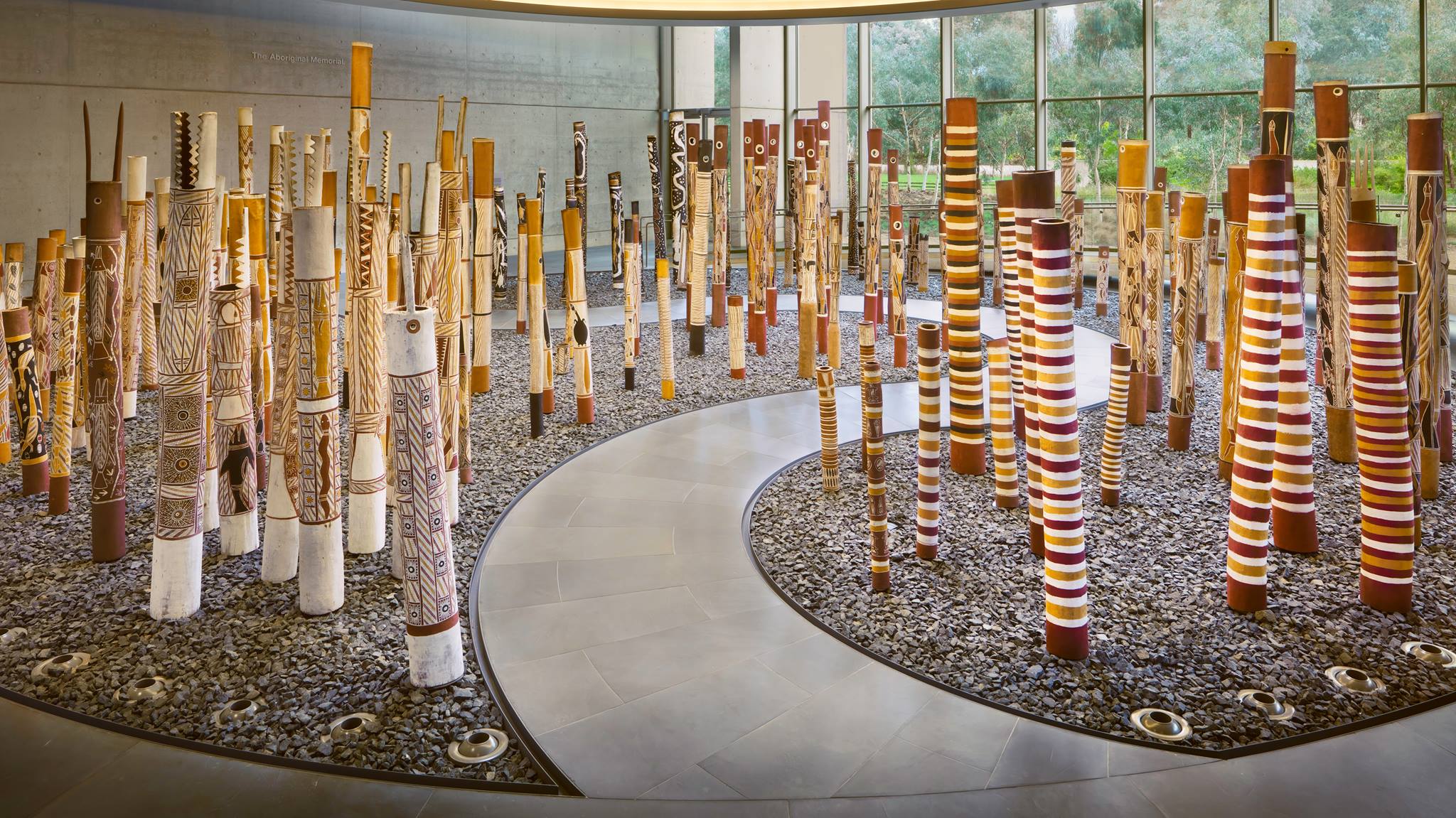
Image: The Aboriginal Memorial 1987–88 (detail) Ramingining, Central Arnhem Land, Northern Territory, Australia sculptures, installation, natural earth pigments on hollow logs, National Gallery of Australia, Canberra, purchased with the assistance of funds from National Gallery admission charges and commissioned in 1987
Conceived by Djon Mundine OAM in collaboration with Ramingining artists of Central Arnhem Land and commissioned by the National Gallery of Australia’s inaugural director James Mollison AO, The Aboriginal Memorial is an installation of 200 hollow log coffins from Central Arnhem Land. It commemorates all the indigenous people who, since 1788, have lost their lives defending their land. The artists who created this installation intended that it be located in a public place where it could be preserved for future generations.
The path through the Memorial imitates the course of the Glyde River estuary which flows through the Arafura Swamp to the sea. The hollow log coffins are situated broadly according to where the artists’ clans live along the river and its tributaries.
The different painting styles apparent in groupings are related to the artists’ social groups (sometimes described as clans) which link people by or to a common ancestor, land, language and strict social affiliations. The people of Central and Eastern Arnhem Land refer to themselves collectively as Yolngu, meaning human beings.
Hollow logs made for a burial ceremony are large. Smaller hollow logs may be made to keep the bones of the deceased at the home of the family for a period of time. The hollow logs can also represent the deceased person — the designs on the log are the same as the designs painted on the body during the burial rites. Many of the hollow logs have a small aperture either carved or painted towards the top. Yolngu believe that this provides the soul of the deceased with a viewing hole to look through and survey the land.
Yolngu believe that to achieve a shimmering brilliance in painting through cross-hatching and line work — giving a ‘singing’ quality to the imagery — is to evoke ancestral power. Artists from nine groups worked on the Memorial, and, whilst clan designs follow strict conventions ruling subject matter, each individual artist’s hand is apparent.
As you move through the Memorial, you will witness the imagery from changing environments, from the lands of the saltwater people further inland to the country of the freshwater people.
The work is unified by an array of common themes: the celebration of life, respect for the dead and mortuary traditions and people’s connection with ancestral beings. Themes of transition and regeneration within Aboriginal culture pervade the Memorial. On a wider scale, the Memorial also marks a watershed in the history of Australian society. Whilst it is intended as a war memorial, it is also a historical statement, a testimony to the resilience of indigenous people and culture in the face of great odds, and a legacy for future generations of Australians.
This year, it is the 30th Anniversary of The Aboriginal Memorial. To celebrate, the National Gallery of Australia is hosting an Annual Lecture and Symposium.
Source: National Gallery of Australia